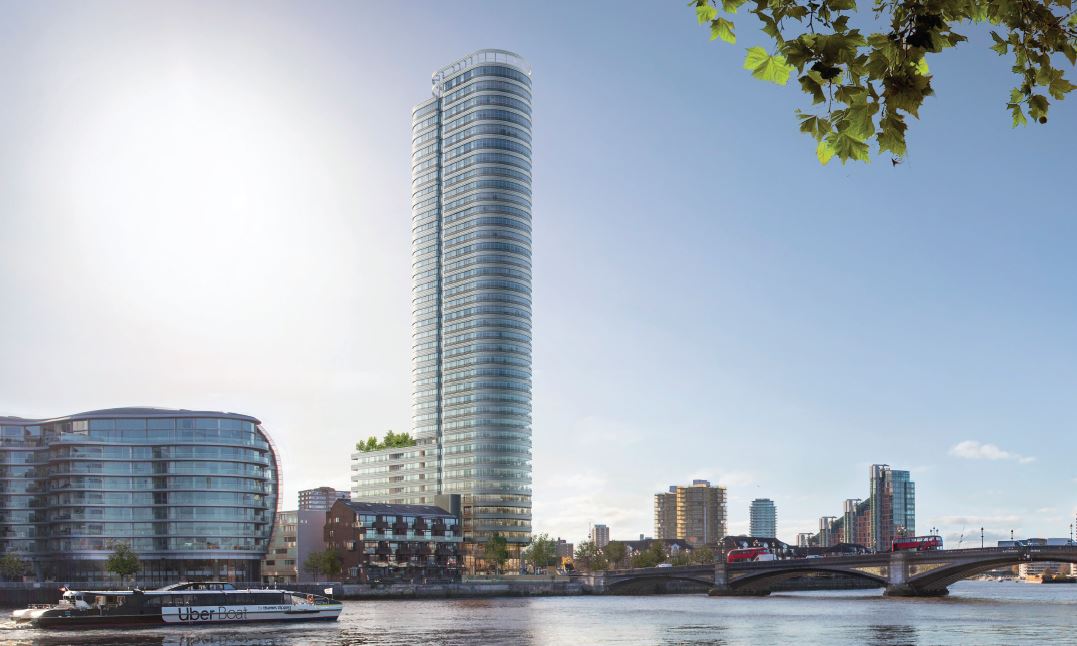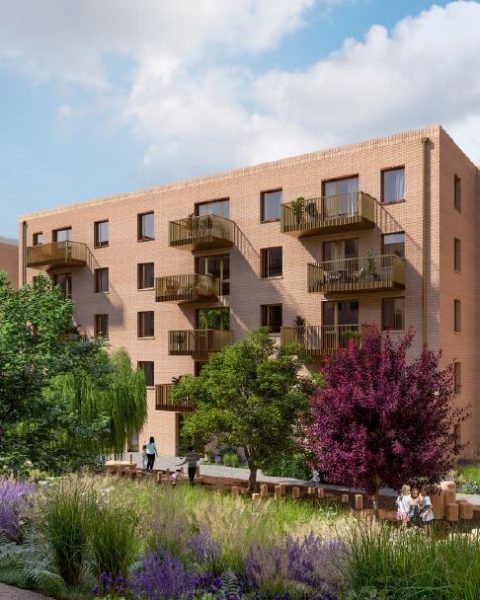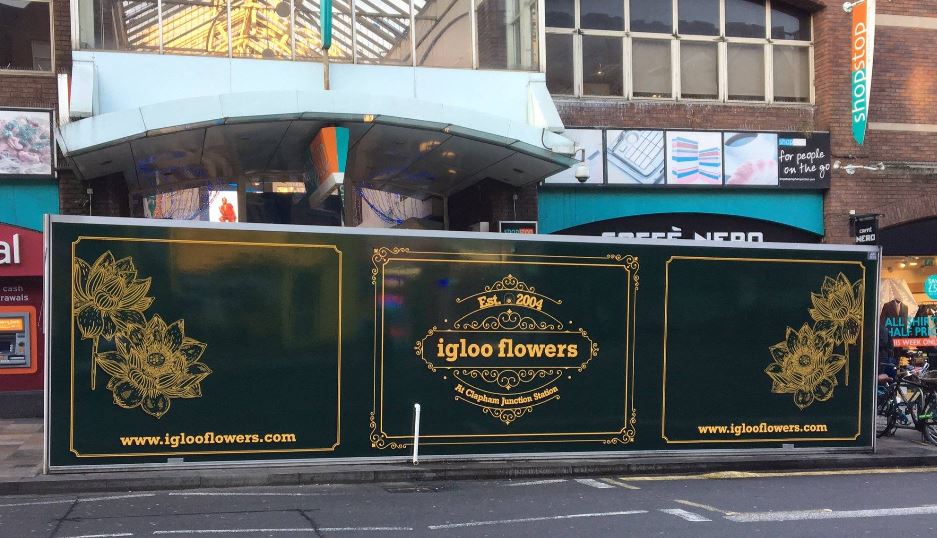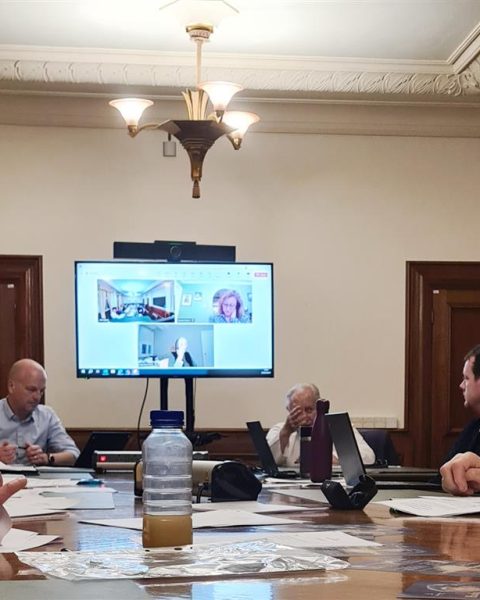An Environmental Impact Assessment (EIA) has been submitted by developers for a 38-storey tower at the bottom of Battersea Bridge. The proposal from the developers seems so much at odd with the local context and in total breach of the local plan that it has attracted 330 objections in a few weeks.
The developers of the Glassmill site at 1 Battersea Bridge Road have submitted a request for a formal scoping opinion for their plan to construct a 38-storey tower. The proposed development involves replacing the current glass-clad building on the southern bank of the river, situated at the base of Battersea Bridge. The new tower will have an L shape, with affordable housing located at the bottom, away from the river, while private units will offer views of the Thames. The affordable block is expected to have a separate entrance and constitute 35% of the total accommodations, but the specific breakdown between intermediate and social housing is not yet specified.
The key challenge is that the proposal directly contradicts the Local Plan adopted by Wandsworth last year and goes against emerging requirements for affordable housing.
Residents are told that their comments are a “waste of time”
Hundreds of local residents have written to the Council to express their discountent for this application. One of the Council spokesperson responded that “objections, apparently valid, will in fact be a waste of time and effort” because this is not a planning application but a scoping opinion.
The particularity of the application is indeed that this is not an official planning request but a scoping opinion for EIA.
An EIA is a process that evaluates the potential environmental effects of a proposed project or development. The aim is to ensure that decision-makers and the public are informed about the potential environmental impacts before a project is approved or implemented. EIAs are often required by environmental regulations and are conducted for various projects such as infrastructure development, industrial facilities, and other activities that may have significant environmental consequences.
Therefore, in theory, planning officers are not even expected to review objections submitted to them.
The issue lies in the Wandsworth planning portal, known for its reputation of being unfit for purpose and facing numerous complaints (for more than a decade) from Community groups and Societies due to recurring faults.
Nearly a decade ago, Adelina Grigoraş published a study called “Technology as a Tool for Public Participation in the Planning Process: Lessons Learnt From the London Borough of Wandsworth”. Regarding the website and the IT tools for consultation, she wrote at the time:
“The fact that [the] problem persists for a few years now means that the council is not interested in improving the services they deliver.”
The requirements for submissions is not clear about what is required and when. On the website page, the Council is inviting comments until 31/01/2024. On the other hand, they are telling people that comments are a waste of time.
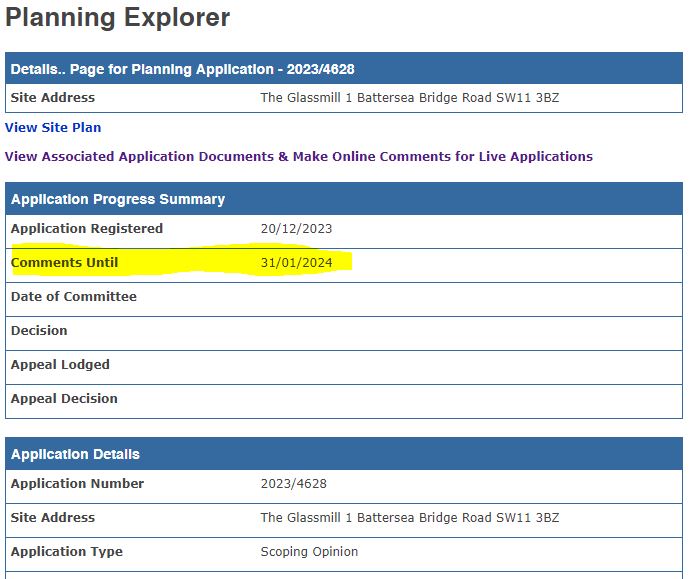
Apparently aware of the issue, they have recently amended the page, saying in the comment description that “THIS IS NOT A PLANNING APPLICATION.” However, it does not clearly explain what they intend to do with the 330 objections that they have already received to date.
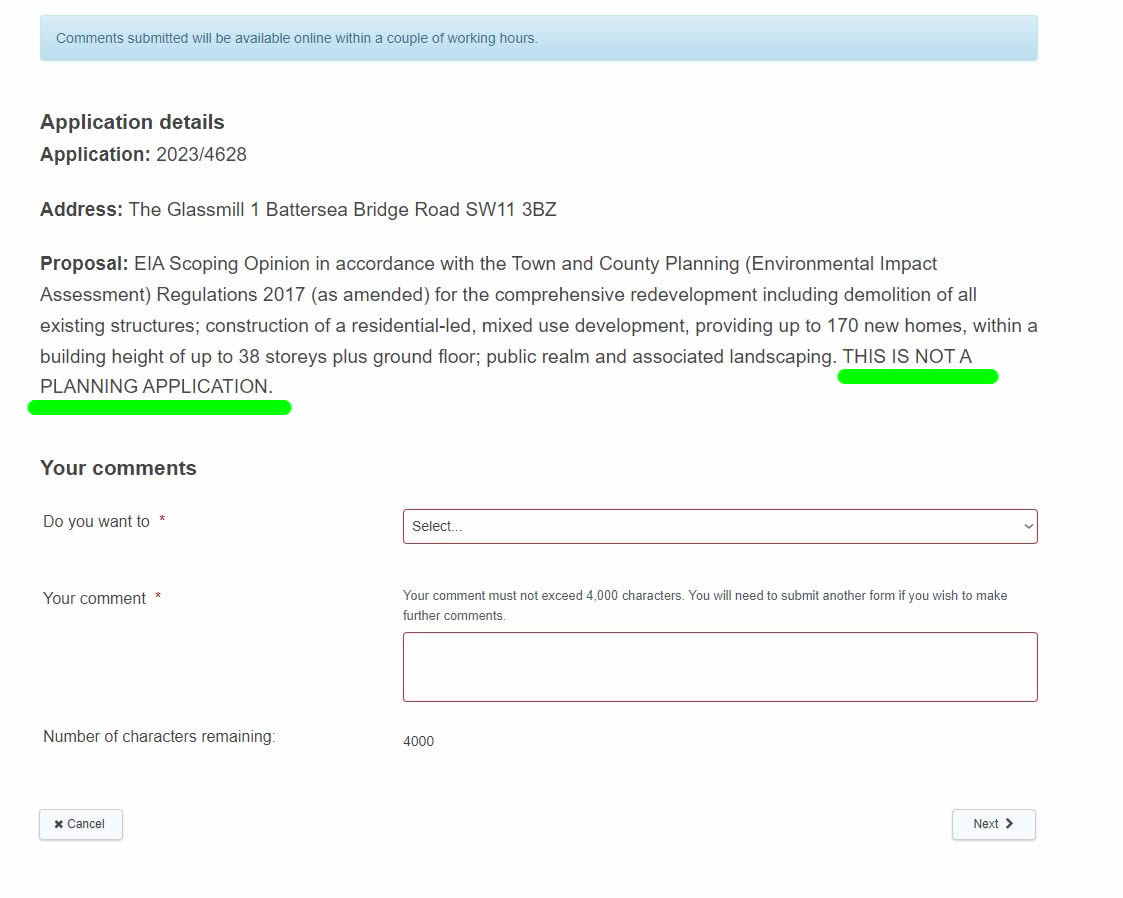
Last year, the Putney Society, Wandsworth Society and the Clapham Junction Action Group (disclaimer: CJAG was the community group at the origin if CJI) have complained to the government inspectors for not being invited to attend the local plan examination hearing at the end of November.
This was due to the Council publishing misleading information on their planning portal, wrongly stating that “the ‘Publication’ Local Plan – along with the evidence that underpins it and all of the feedback received in the various public consultation events – [was] submitted to the [Planning Inspectors], acting on behalf of the Secretary of State.” However it appeared later that previous comments received were not sent and only the most recent representations were submitted and invited to the public hearing.

The Council refused to acknowledge their mistake and act to correct the consequences of having important community groups unable to attend the Local Plan hearing. Instead, planning officers claimed no-wrong doing.
Profound concerns about the submission of a plan in total breach of policies
In the past, Wandsworth Council has used scoping opinion requests to encourage developers schemes.
For instance, an EIA was submitted in 2015 for a 17 storey tower in York Road and while in breach of local policy stating a maximum of 9 storeys for the area, Wandsworth planning department gave a positive advice:
“Whilst there are a number of buildings of smaller scale also within the vicinity of the site, including Prices Court and Candlemakers to the south, the development may not be out of character with the large scale buildings that form a key component of the visual character and townscape of the area“
It later resulted into a planning application which was then approved by the Council.
Therefore, while acknowledging that an EIA or scoping opinion does not constitute a formal planning application, individuals and community groups have valid reasons to voice apprehensions regarding the scrutiny that will be applied to this application.
The Battersea Society said:
“The Battersea Society find it irritating and premature that such a detailed (and in parts inaccurate or misleading) submission has been submitted as scoping for an EIA for this egregious proposed development. During the recent public consultation exercise there was wide concern about the totally inadequate material provided and widespread opposition to the scale and form of the proposed development. […] We urge the Council to ask the applicant to withdraw this application and for both Councillors and officers to advise in any further pre-application discussions against pursuing the present scale and form of development proposed which is so far removed from the recently approved Local Plan.”
The Putney Society also said:
“The Putney Society doesn’t normally comment on applications in Battersea, nor on EIA scoping applications, preferring to wait for the actual proposal to follow. But this scheme for a 38 storey tower demands our attention because for the Council even to consider considering it risks discrediting the new Local Plan and the Council’s faltering aspirations to be the Greener Borough.”
The Wandsworth Society also submitted a sharp criticism highlighting both the consultation issue (and the planning portal misleading information) and the problem that any further consideration of this planning proposal would immediately imply. They said:
“The Planning Explorer portal is currently inviting the community to submit comments until 31/01/2024, with applications details available on the page. We would welcome an official statement explaining how you intend to deal with the more than 330 representations that you have received and/or whether you plan to disregard them entirely.
Despite the current absence of any guidance regarding the consideration given to representations for this Environmental Impact Assessment, we wish to express our profound concern regarding this application.
First and foremost, the simple fact that officers are even considering such a planning application is disconcerting. Even in its previous iteration, a tower of 38 storeys would have been contrary to the environment context. The revised Local Plan approved during the latter part of last year clearly set out the aims of your Council until the next review, and specifically that the height for this site should not exceed 6 storeys. Although it was later amended, providing a small amount of flexibility, the Council also published a clear explanation of their intention (MM146):
“The Council wishes to maintain the thrust of its position by seeking to restrict proposals for tall and mid-rise buildings outside [tall building] zones.”
In the Local Plan, the site is clearly not included in the tall building zone. In any case, even considering the adjoining tall building zone, height is restricted to 12 storeys, far below the 38-storeys proposed.
Therefore, we can only highlight the very serious consequence that any other decision rather than a straight forward rejection, based on the numerous breaches of the recently adopted local plan, would have. The most significant being simply to discredit the Council’s policies and reduce the document to having no consequence. If, as seems probable, pre app discussions were held with your planning officers, the guidance given to the applicant’s advisers may have been grossly misleading if the interpretation of the guidance has led to the EIA now presented, which raises further questions that should be addressed.
Without providing specific comments on the application at this stage, we would like to express our support to the objections made by the Putney Society (which specifically list the policies blatantly ignored) and the Battersea Society. We reiterate that none of the potential benefits resulting for such scheme would ever outweigh the critical harm to that it would make.
It is evident that if the EIA application is accepted and processed positively by the Council, this will set a precedent for other similar applications which apparently ignore the Local Plan. As a consequence, the confidence in any future community engagement and consultation would be deeply affected and the credibility of the Council’s local plan would be undermined.
We trust that the Council will provide unambiguous advice, and we hope that it will prompt the applicants to withdraw this EIA forthwith, thereby not wasting the officers’ time nor the developer’s money.
In further feedback, we kindly request that you implement adjustments within the planning portal to prevent potential confusion in subsequent scoping applications. Your communication on how you plan to proceed in the future would be greatly appreciated.”
As we said in a previous article, the council faces a choice: either to challenge and discourage developers who defy planning rules in pursuit of perceived benefits, or to disregard the local plan, signaling to developers that they can submit proposals without adhering to the 480-page Local Plan, its annexes, and future supplementary documents. The resolution to this dilemma is expected in 2024.
To conclude, we can cite an objection submitted by Mark Poulter, a resident in Putney, who commented:
“It is to be hoped that the developer was informed at the pre-application that such a tall building would seriously transgress the Local Plan and that further pursuit of such a scale of proposal would be a waste of their time and money.
Conversely, if Wandsworth Council were prepared to countenance and approve 38 storeys in this locality, identified as being for 8-12 storeys, then the credibility of the Local Plan and the confidence of the community in the engagement on its creation would be in tatters.”


